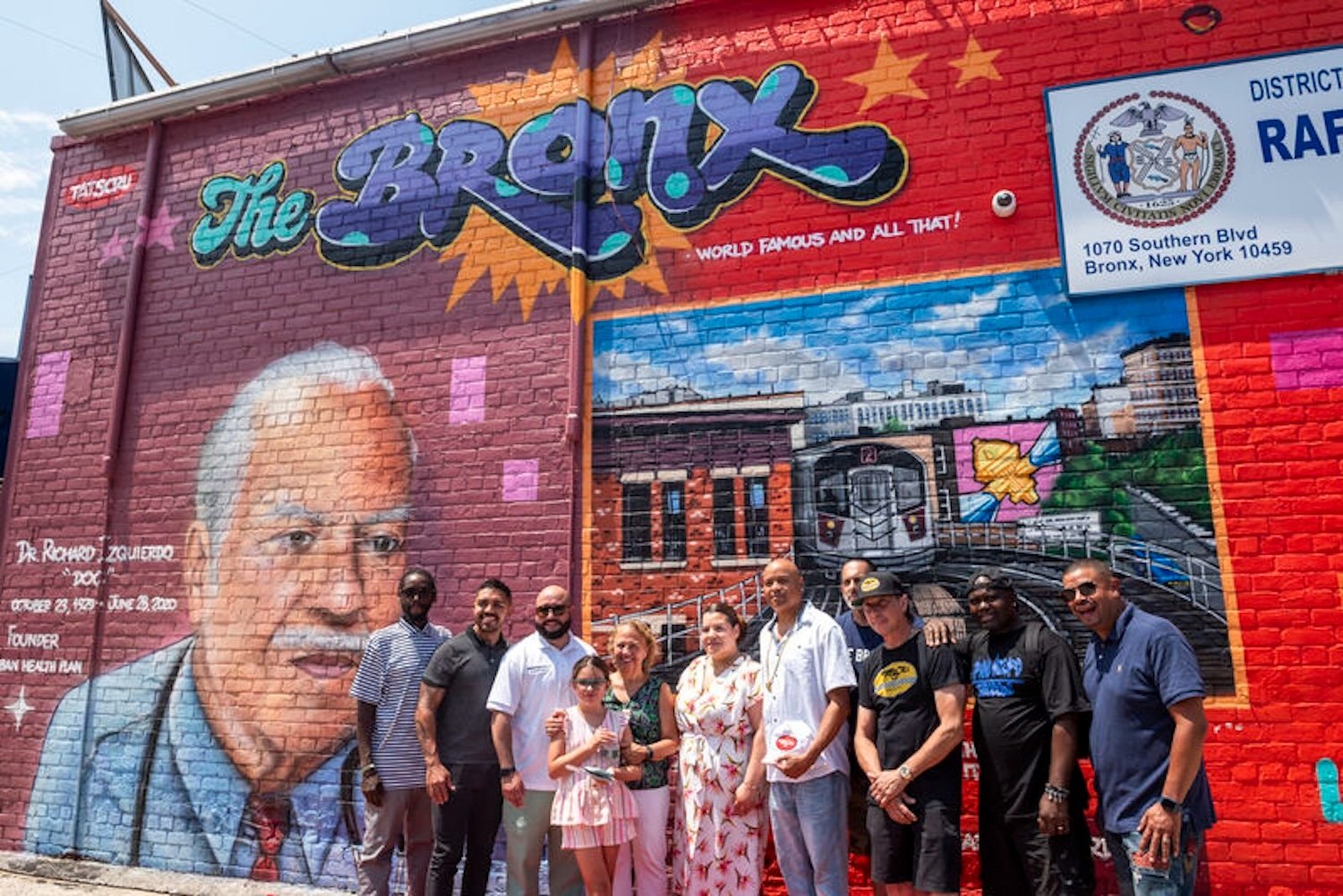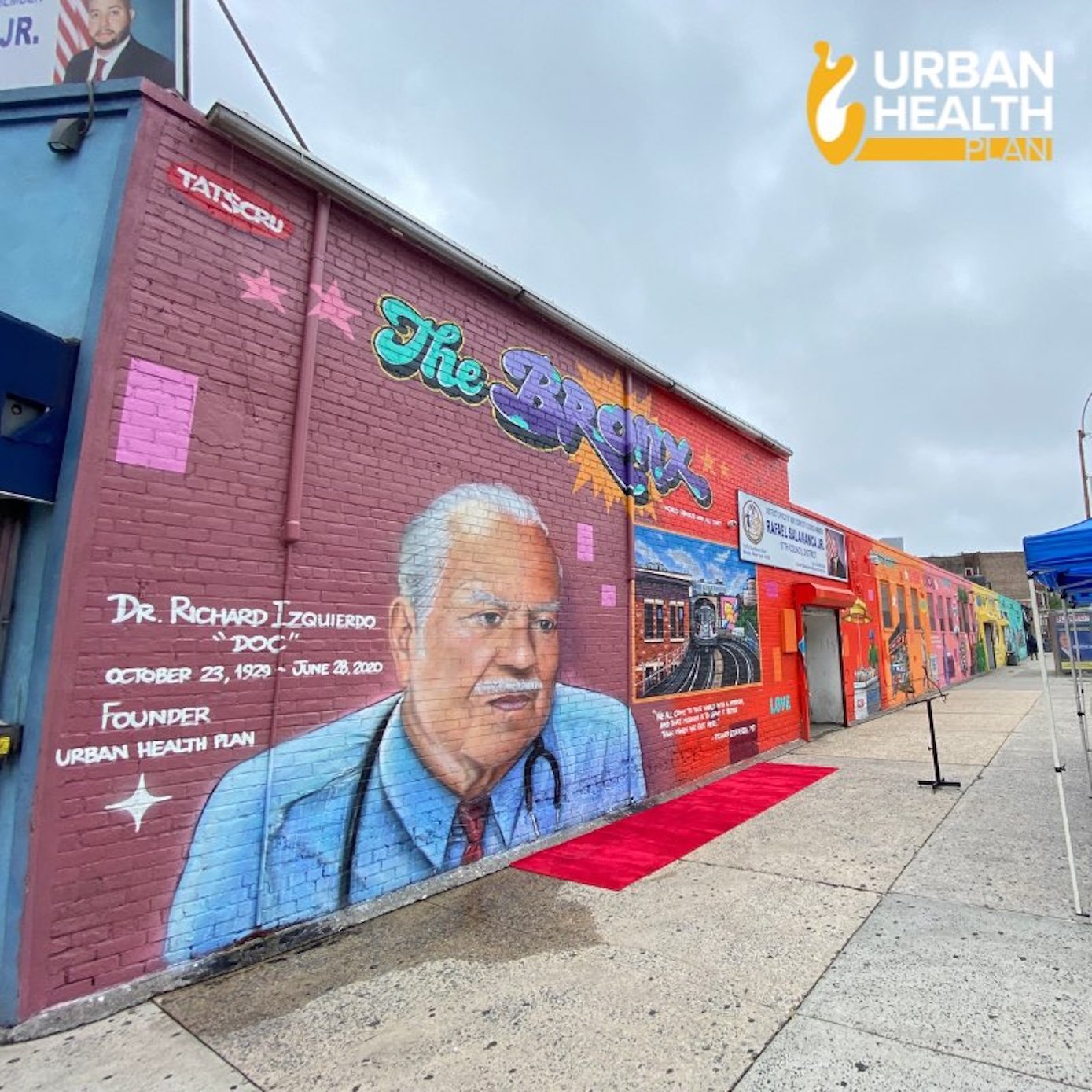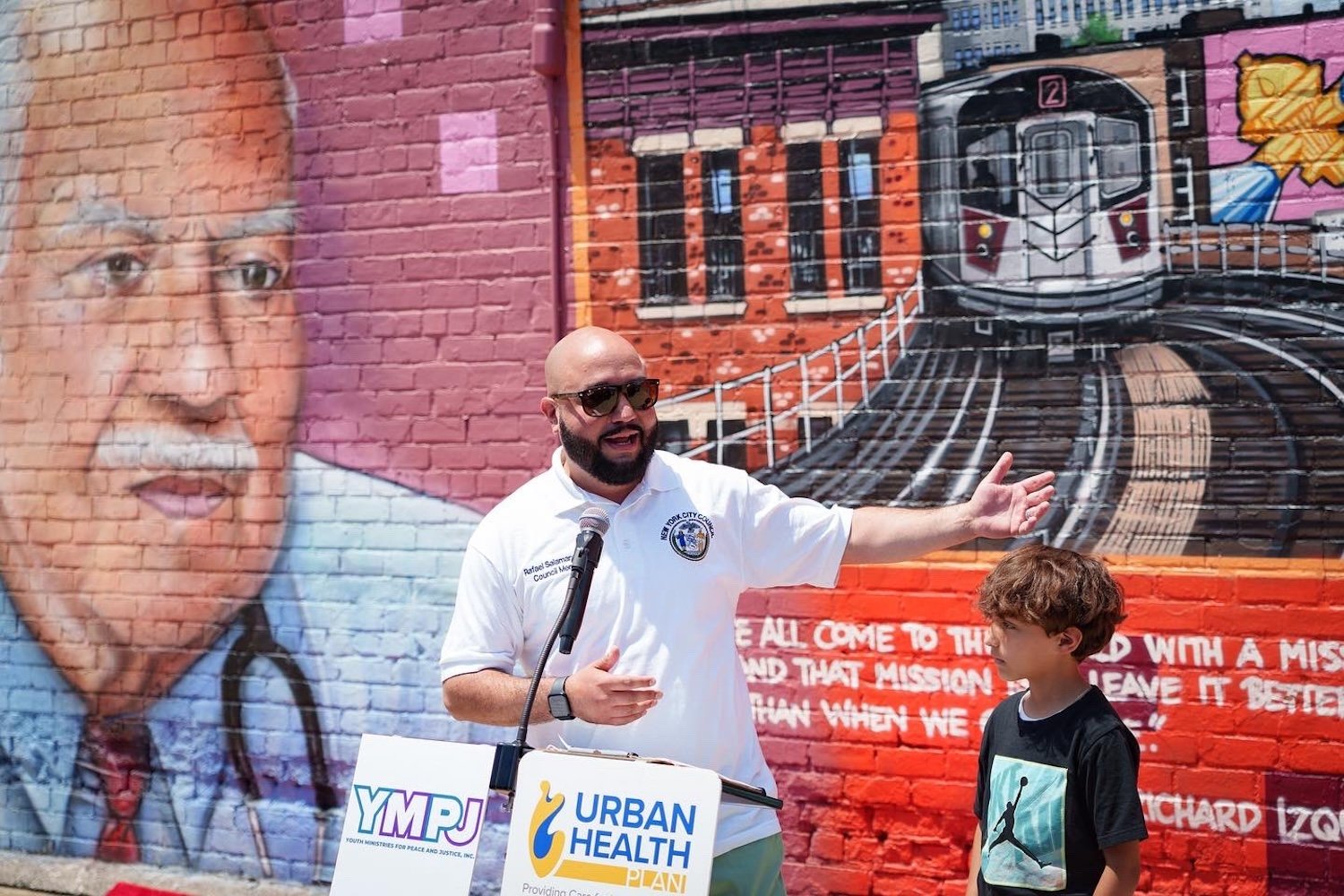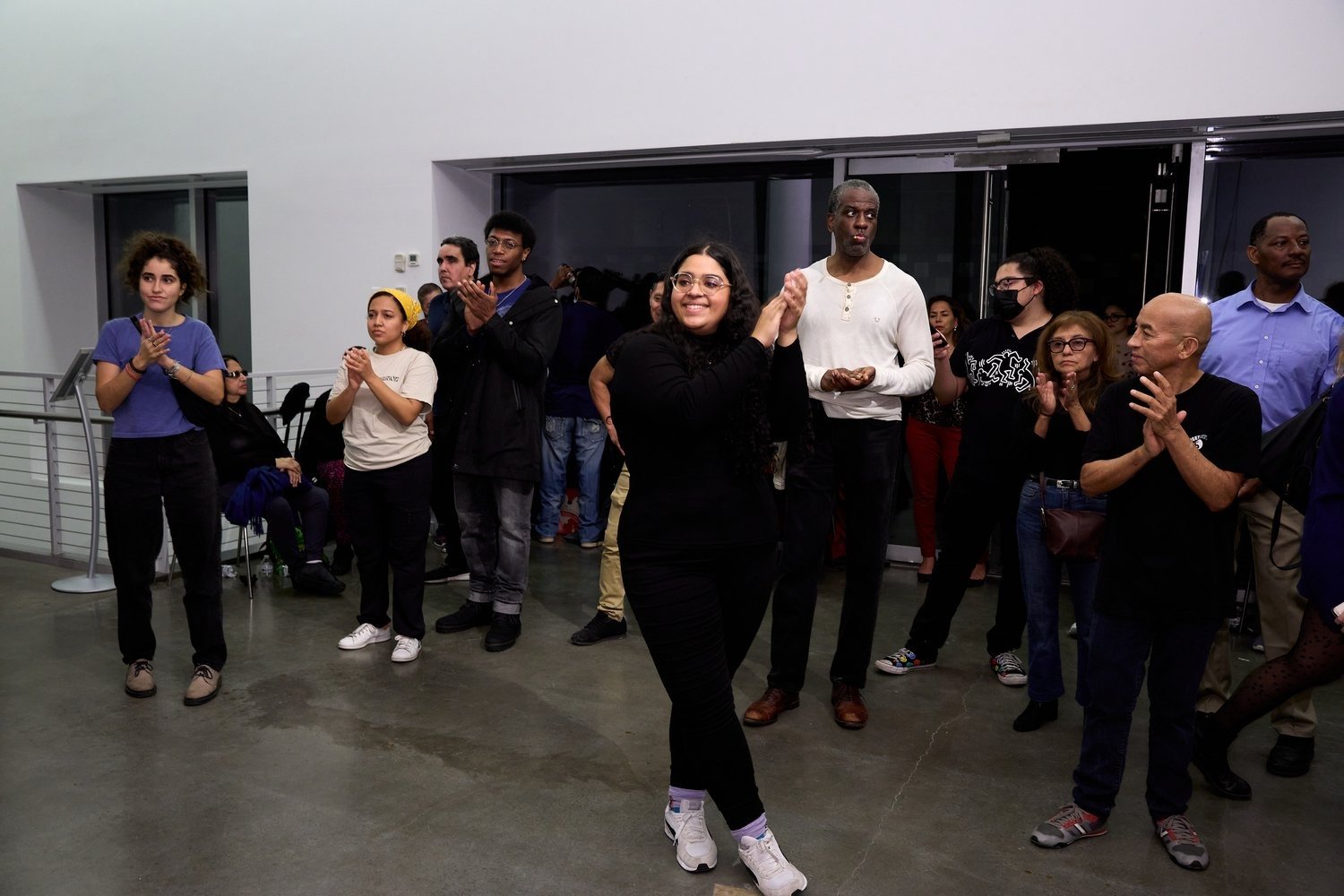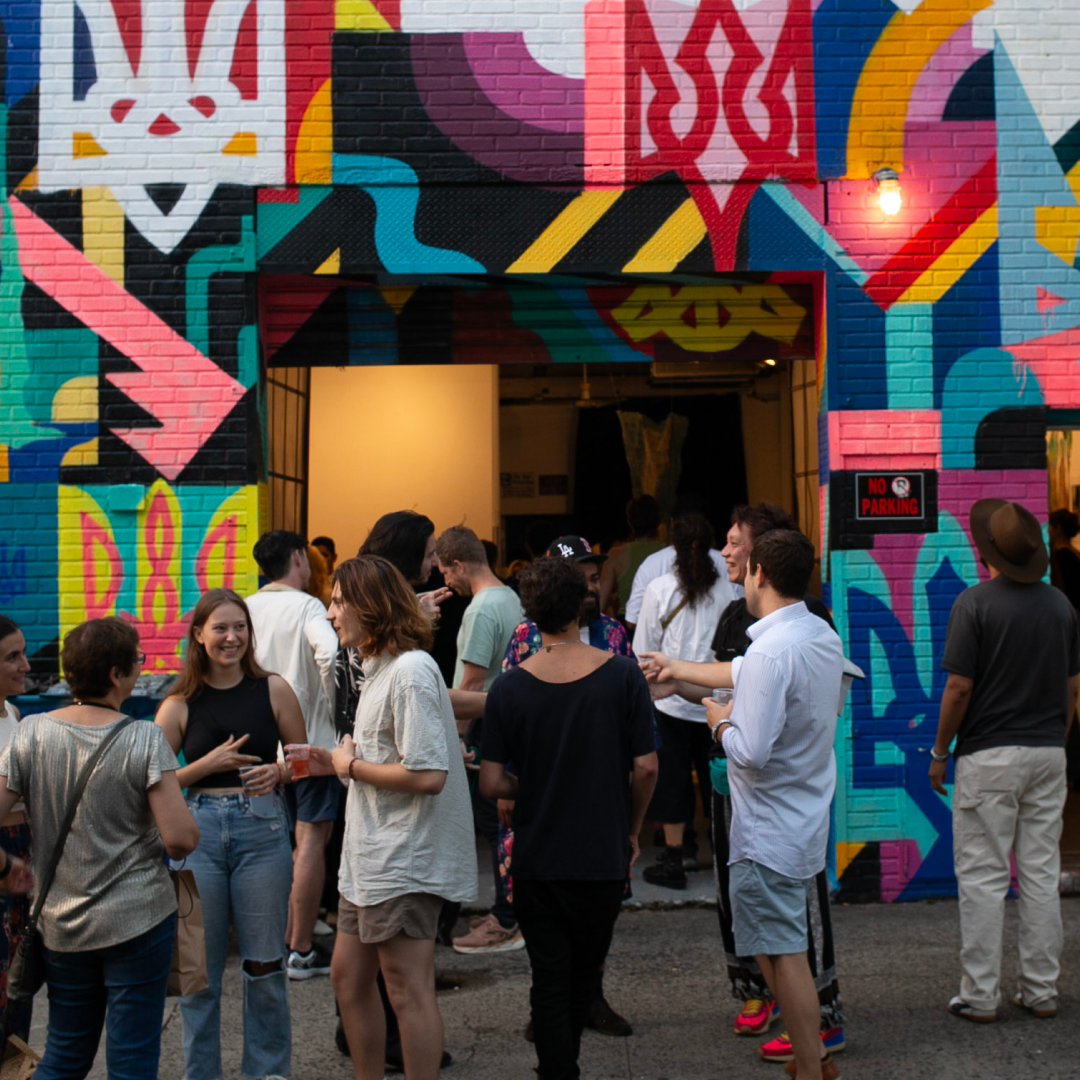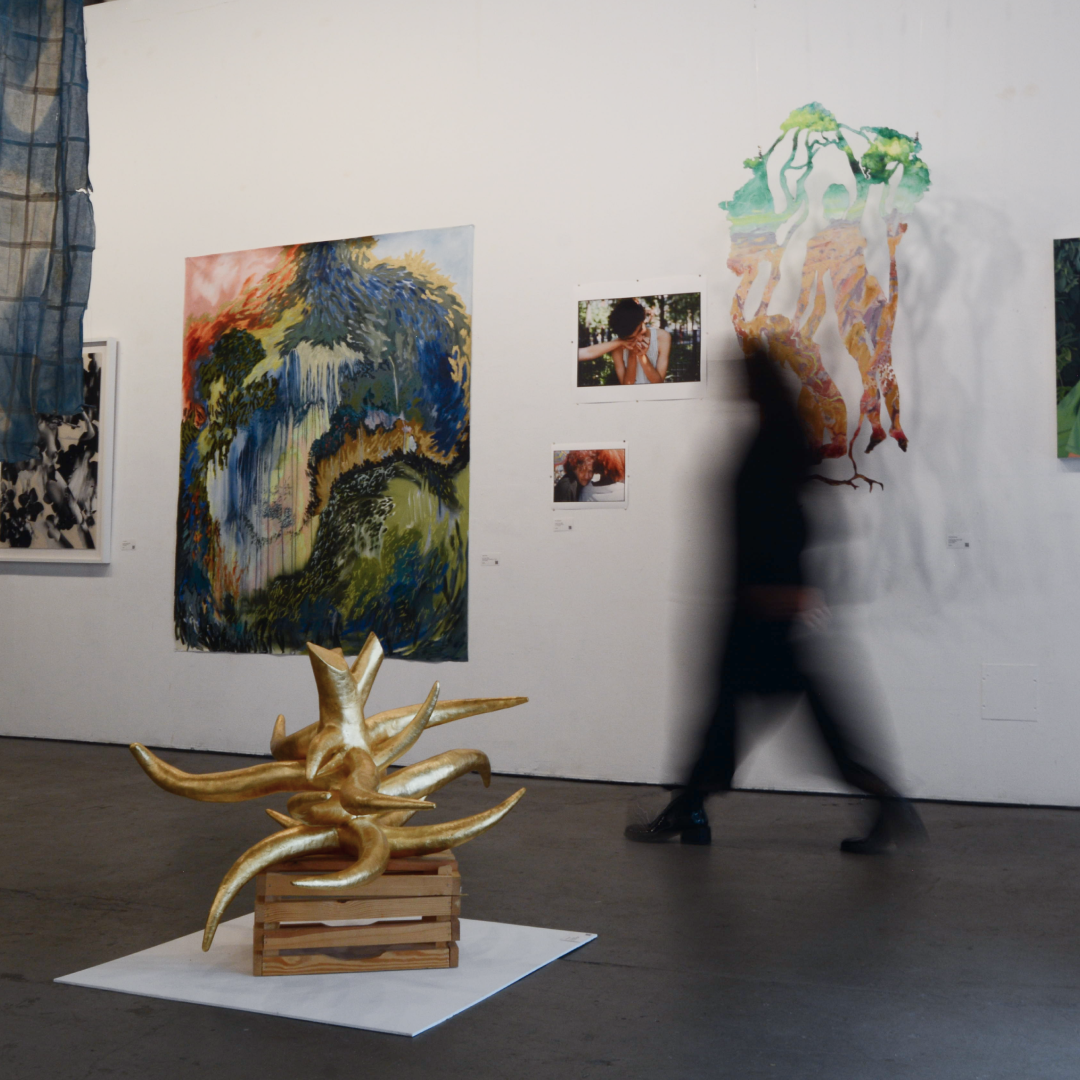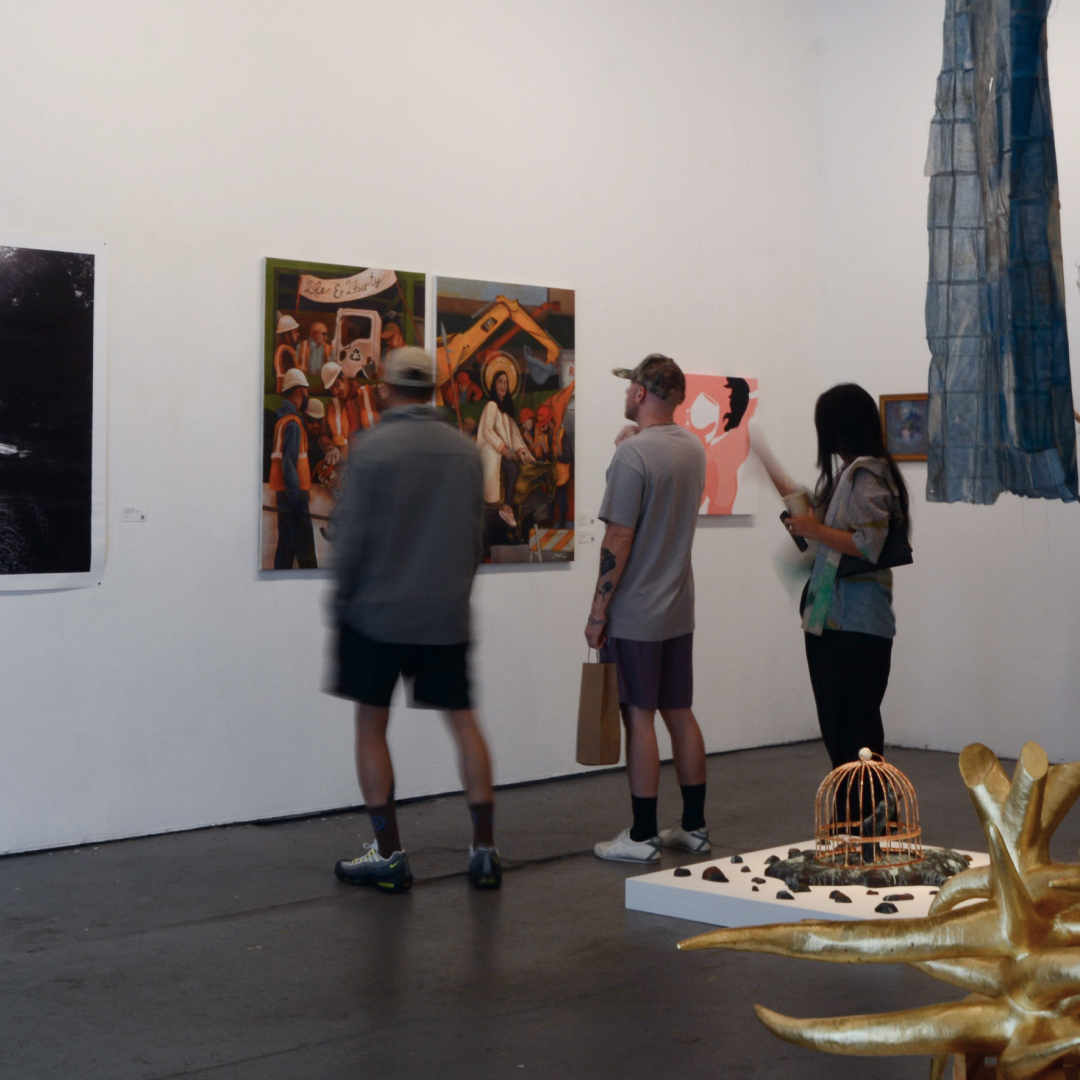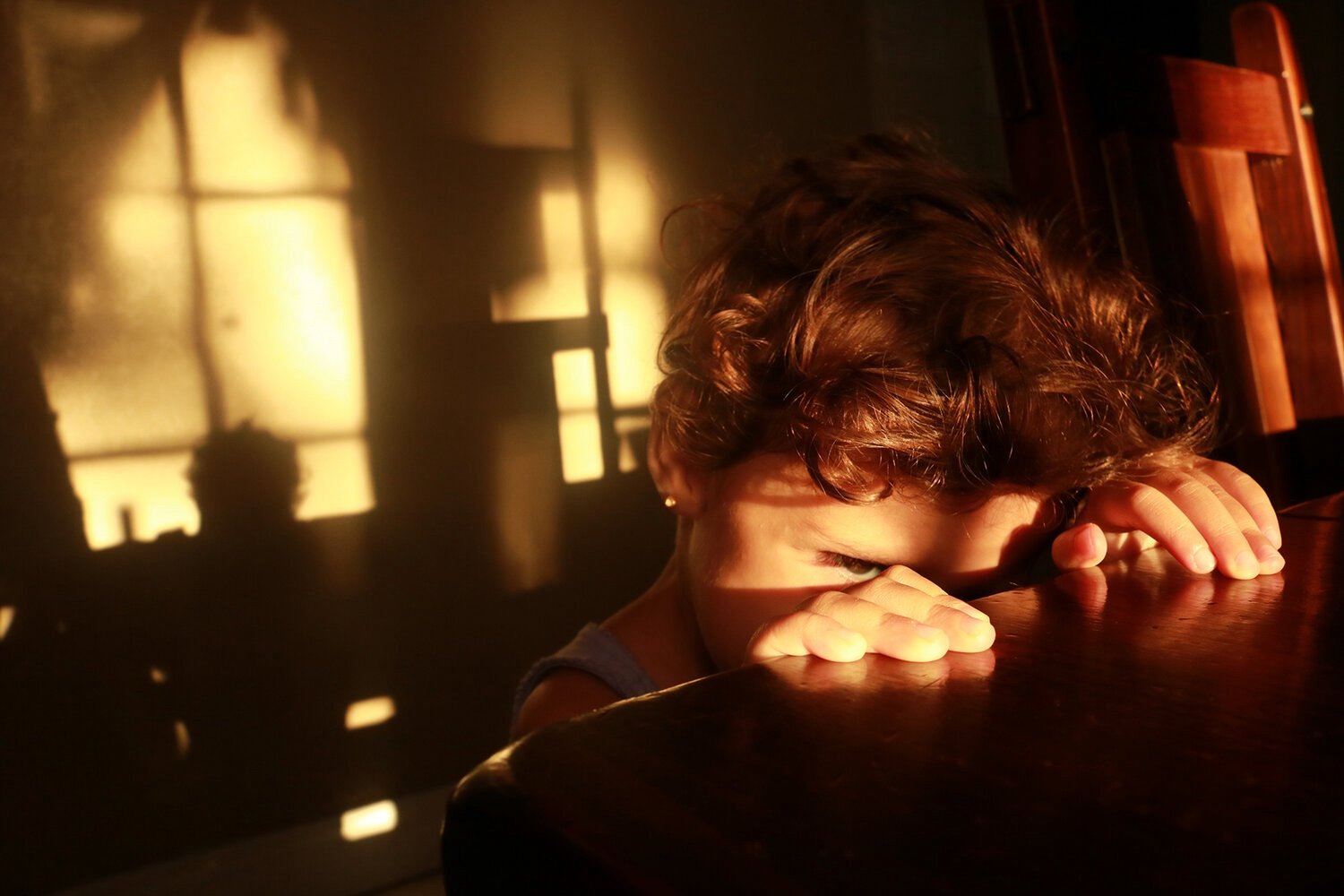Andrea Sofía Matos
Nicolás Dumit Estévez Raful Espejo Ovalles Morel: Andrea Sofía, we met through Christine Licata, a culture visionary in the South Bronx and beyond. She suggested you as the person with whom to engage in this conversation about social prescribing and healing in our borough. I see that you work as an artist, art administrator, curator and advisor. Before we get into your roles, what would you like to say about yourself, the person/the being?
Andrea Sofia Matos: Nicolás, it’s a pleasure to be included in this wonderful series! I am a proud puertorriqueña, born and raised on the island who loves amarillos (sweet plantains), the beach and the mountains. Recently my mother reminded me that when I was little, whenever someone would ask me what I wanted to be when I grew up, I would tell them I wanted to be an artist, but not the ones in Hollywood, I wanted to be the ones who painted. So, I think art has always been an essential part of who I am even if I didn’t know which direction I wanted to go towards within this large arts ecosystem.
NDEREOM: What is social prescribing for those of us who might not be familiar with this concept, and how do you seek to set this initiative in motion in the South Bronx?
ASM: Before speaking about social prescribing, I always like to remind people that this term is a fancy new way of naming the community-based healing work that’s been happening for centuries, especially in indigenous and communities of color throughout the world. I love to give context, so here is a bit on this, social determinants of health are the non-medical factors such as social, economic, and environmental components, that significantly influence the health and well-being of individuals and communities. These determinants encompass more than just personal behaviors and genetic factors; they focus on an individual's context and how this context influences broader societal conditions, forces, and systems. Key social determinants examples are safe housing, transportation and neighborhoods; racism, discrimination and violence; education, job opportunities and income; access to nutritious foods and physical activity opportunities; pollution (air and water), and language, literacy and the arts. The United States Department of Health and Human Services defines social determinants of health as, the conditions in the environments where people are born, live, learn, work, play, worship, and age that affect a wide range of health, functioning, and quality of life outcomes and risks. Therefore, social prescribing is one of the solutions to actively combat the social determinants of health. It’s a method aimed at connecting patients with a variety of non-clinical community services to enhance their overall health and well-being. It’s a holistic approach to healthcare that connects people to activities, groups and services in their community to meet their practical, social and emotional needs. Typically provided through communal activities, examples include volunteering, art making, gardening, nature walks, cooking, and movement. In my case, I am focusing on social prescribing through the arts (visual, performing, culinary, literary and horticulture). Because there’s substantial scientific data that proves that by giving people “prescriptions” to participate and engage in the arts they’re able to enhance their physical and mental well-being.
The Bronx has always been rich in cultural and artistic production, from salsa to hip-hop, the visual arts and much more. Yet it’s a space that's been battling multiple challenges, positioning it as one of the most historically underserved areas in New York City. With approximately 30% of residents living in poverty, a 12% unemployment rate, and high rates of eviction, unemployment, and child welfare involvement, the South Bronx neighborhoods, in particular, grapple with substantial health disparities like high rates of pre-term births, diabetes, HIV infection, and premature death. Therefore, having this program of social prescribing of the arts is essential to revitalizing the Bronx community, by bringing joy and hope back into people's lives.
NDEREOM: I see that you are working at Urban Health Plan’s main site, El Nuevo San Juan Health Center on Southern Boulevard, an iconic place in our neighborhood clearly linked to its histories/herstories/theirstories of activisms. How would you say are these legacies informing your work and what you seek to do?
ASM: The impact of Urban Health Plan in the Bronx has served as the guiding light for this project. I owe my current position to what Dr. Richard Izquierdo, the founder of Urban Health Plan built 50 years ago, who consistently dedicated himself to addressing the medical needs of his community. It is his enduring legacy that continues through Paloma Izquierdo-Hernandez, his daughter and the current President and CEO. Under her leadership, the organization has maintained a commitment to building blocks, care, and dedication to the community, earning their trust and respect. It was her idea that made way for the implementation of a social prescribing program, which encapsulates the community work that has always been at the core of Urban Health Plan’s mission.
We are then able to incorporate the dynamic cultural and artistic histories of the Bronx to better serve and implement this social prescribing program of the arts. A lot of it is rejecting the “Bronx is Burning” stereotype and instead spotlighting the incredible work that has been and is happening across the Bronx always. Supporting and collaborating with fantastic cultural institutions like the Bronx Museum, Bronx Arts Space, iD Studio Theatre, Literary Freedom Project, The Point CDC, Casita Maria, The Bronx Music Heritage Center, Longwood Art Gallery, Pregones Theatre (PRTT), and many others.
The vision of this program with Urban Health Plan is to create an inclusive space where arts are for everybody, ensuring that individuals from all backgrounds can participate and reap the benefits of the arts for the enhancement of their overall health and well-being. We want the Bronx to be healthy, full of joy and life, and the arts are essential to this process. What better way to make the arts accessible than to make it a requirement of people’s healthcare.
NDEREOM: I agree! You were born and raised in Puerto Rico. My experience as a creative and resident of New York has been greatly shaped by my connections with a long list of Nuyorican, New York Rican and Puerto Rican activists, artists and organizers living outside the island, and I am extremely grateful to them. How has it been for you here? Is there anything that you may have had to learn in the U.S./New York in regard to your own culture(s) and identity/identities?
ASM: Moving from Puerto Rico to the USA didn’t come without its challenges, it was a bit of a culture shock at first because of the differences in lifestyle and community. I am most grateful for the worldly perspective I have gained ever since moving. Some things, within the confines of an island, feel unattainable or impossible, and making this leap into the unknown has been a huge privilege and an enriching experience. I have learned many things about my culture and identity, leaving home I think always provides some much-needed space for reflection of what you had, and what you want for the future. For me, it’s been about realizing how deeply I need others, a community to turn to when I’m homesick, seeking a safe space and some calentón (warmth).
I've also noticed how people born here in the Bronx and those from Puerto Rico share a lot of the same life experiences. It's clear that there's still a lot of work to be done to ensure that the arts represent both Nuyoricans and those born in Puerto Rico. But, as cliché as it sounds, if we come together, we can really make a difference. The strength of our unity and a commitment to representation can bring lasting change in the artistic and cultural landscape for both communities in the greater arts world.
NDEREOM: I could speak volumes about the vital support that I have received from Nuyoricans, New York Ricans, and Puerto Ricans, as well as from Bronxites from all backgrounds. In my opinion, there is no place like the South Bronx, my home. With all of the challenges, exploitation and oppression that most of us there face –to a lesser or greater extent. every time that I leave the place and come back, it is like falling in love again. The faces, the interactions, the synergies, the authenticity, the no-masks or wanting to impress others… What brought you to the Bronx, a borough that is rapidly changing in so many ways, or perhaps not.
ASM: My involvement in the arts is what brought me to the Bronx. Before I had even arrived in New York City, a dear mentor, friend and collaborator Amy Rosenblum-Martin, curator and art historian, had invited me to participate as the curatorial assistant for an exhibition that she was co-curating with Ron Kavanaugh at the Bronx Art Museum titled Swagger & Tenderness: The South Bronx Portraits of John Ahearn and Rigoberto Torres. This exhibition (and the Bronx) was my introduction to New York City, and I quickly realized why so many people, like yourself, think there's no place like it and gravitate towards it. It’s such a great community to be a part of, I’m super grateful for Amy, Ron and everyone who immediately made me feel welcome– it the one place I’ve travelled to in the USA that I have felt closest to home.
NDEREOM: I am smiling as I write these questions. I can hear the voices of some my activist friends: “Stay away”, “Do not move to the Bronx”. I get that too. For so long we have been able to be ourselves and be protected from the user-friendliness that has rendered other boroughs practically an extension of suburbia with all its blandness. On the other hand, we still have to put up with paying high prices for food, as well as with city neglect. How do you see social prescribing not only speaking to these issues but also shaking the dominant systems that want to keep us down and tell us that we do not matter?
ASM: Similar to what I said before, social prescribing really is us going back into those ancestral roots in community and communal living, it’s about recognizing that we have the power to heal one another in a variety of ways, but we can’t do it alone. We are gregarious beings, and we need each other. I believe we’re slowly coming into that spirit of unity and solidarity once more; people crave it –especially after nearly losing their minds out of loneliness through the COVID-19 lockdown. Therefore, social prescribing is at its core, it is a tool that brings people together in community, gives them access and empowers them which I believe is the best way to shake up systems of oppression and control.
NDEREOM: Oppressive system tend to want to keep people apart. When we come together, ask for help, offer help, and realize that we are not alone in the struggle, these systems start to crumble. Tell me about your creative work. I see that photography is part of this, and I am curious about the series with your smallest cousin. It is inspiring to see more artists bringing forward their day-to-day and their home experiences into the arts. I come from a generation where some art professors would tell women that they were wasting their time in art school, and where I saw women actively seeking to avoid any elements of the domestic in their work for fear of being stereotyped.
ASM: I always struggle to call myself an artist because it’s not something that I do regularly. I definitely think being a curator and an administrator is close to my “calling” however, whenever I have done creative work, mainly photography and video, it has always centered around who I am, what my context is and the people with whom I have grown with, whether that is my family or my friends. One of the best professors I’ve ever had, Tony Chirinos, told us in one of our first classes that we should photograph what we know and what was most familiar to us. In his mind, this was the best way that we could begin to understand and intentionally produce what he called “drawing with light” (referencing the etymology of the word photography) and I have always appreciated that lesson. It’s hard for me to make art of a subject matter that is disconnected from who I am, whether that be my immediate surroundings, thoughts, interests or problems. You’ll see that in Lucia Means Light, PCOS, Casa / Home and The Unemployment Project, all of which are connected to who I am or experiences I’ve had in one way or another.
When speaking about the pressures women and female-identifying artists find within the different pockets of the art industry, still being subjected to restrictions and criticism regarding their art, bodies, and lives is quite shameful. No one should dictate what an artist chooses to communicate through their art. What truly matters is how artists convey their reality, dreams, thoughts, or sociopolitical and cultural views not in conforming to predetermined norms.
I encountered many professors who tried to dictate what their students should consider important. However, I believe there is something noble about an artist, irrespective of gender or gender identity, to focus on the domestic and scenes of everyday life. There's something magical that happens when an artist delves into the personal, enabling them to convey something universal. It is one of the reasons I find art so captivating.
NDEREOM: You talk about the diaspora and the diasporic, the Caribbean and Latin America as your interests as a curator and writer. I see this as well in your photographs for Home and in its Untiled video. My friend Alanna Lockward said something like, All Dominican art is by nature diasporic. I would expand on that and say that, all Caribbean art is by nature diasporic. Many of those who left our homelands can see our islands/homes/region from a different perspective, and have developed new ways of being Dominicans, Puerto Ricans, and Caribbeñes/as/os in the new places of residence. How is this for you?
ASM: You know, I never realized the significance of the diaspora until I became a part of it. I've come to understand that we truly need each other, and that despite our differing realities, we are all connected as part of the same cultural and national community. Just as the people in one's home country are important, alongside their struggles and achievements, for the diaspora –the challenges and triumphs of the diaspora also impact those in the country of origin.
NDEREOM: Where do you find warmth and light in our city? For me is about colors. I go down into a hole when those strident Caribbean colors go missing for too long. I need my guava pinks and verdes cotorra or a regular basis. They are medicine to my soul.
ASM: I hate sounding like a cliché once again, but I really find warmth in spaces where my community is experiencing joy whenever I go to see my Puerto Rican or Caribbean friends at the park, their apartment, or bumping into them at an exhibition, it really fills me with so much love. But within the city itself I find that there are pockets of warmth everywhere you go I love walking through Harlem or the Bronx and catching the smells and sounds that are familiar to Puerto Rico or the Caribbean, sitting at a bench in Chinatown and people-watching, but I also find lots of joy in going into the natural spaces this city has to offer such as Prospect Park or Governors Island.
NDEREOM: Thank you for being here with us. Gracias.
ASM: Mil gracias por esta oportunidad! I’m extremely grateful for this opportunity!
All images courtesy of Andrea Sofía Matos
Andrea Sofía Matos’s links: Website / Instagram / UHP Video
Andrea Sofia Matos is a recent graduate student in Visual Arts Administration program at New York University (2024). She received her BA in Art History and Photography from Florida International University (2021). Born and raised in Bayamón, Puerto Rico she is a curator and arts administrator with a concentration on contemporary art from the Caribbean, and their diasporas.
Currently she’s the Arts & Wellness Coordinator at Urban Health Plan, where she is leading, developing and implementing a social prescribing program housed within Urban Health Plan’s health centers in South Bronx, Corona Queens, and Harlem. The Arts Desk operates with the mission that the arts contribute significantly to the physical, mental, and spiritual well-being of individuals, whether through witnessing artistic expressions or actively engaging in the creative process.
Her latest curatorial projects include BotanicÁrte and exhibition that celebrates artists as healers at Taller Boricua, Harlem which opened on March 8, 2024 and a group exhibition at Tiger Strikes Asteroid in Brooklyn which opened on April 13, 2024. Recently she’s been awarded the Public Humanities Fellowship from the Latinx Project at NYU; curated IN-ANIMADA a solo exhibition at Galería SPACE in Guaynabo, PR by artist William Norris Pagán and was the curatorial assistant of the exhibition Swagger & Tenderness: The South Bronx Portraits of John Ahearn and Rigoberto Torres at the Bronx Museum of Art. She has also worked and collaborated with multiple organizations such as Puerto Rico Art News, Museo de Arte Contemporáneo de Puerto Rico, LnS Gallery, The Margulies Collection, The Women Photographers International Archive (WOPHA), Locust Projects, and more.
